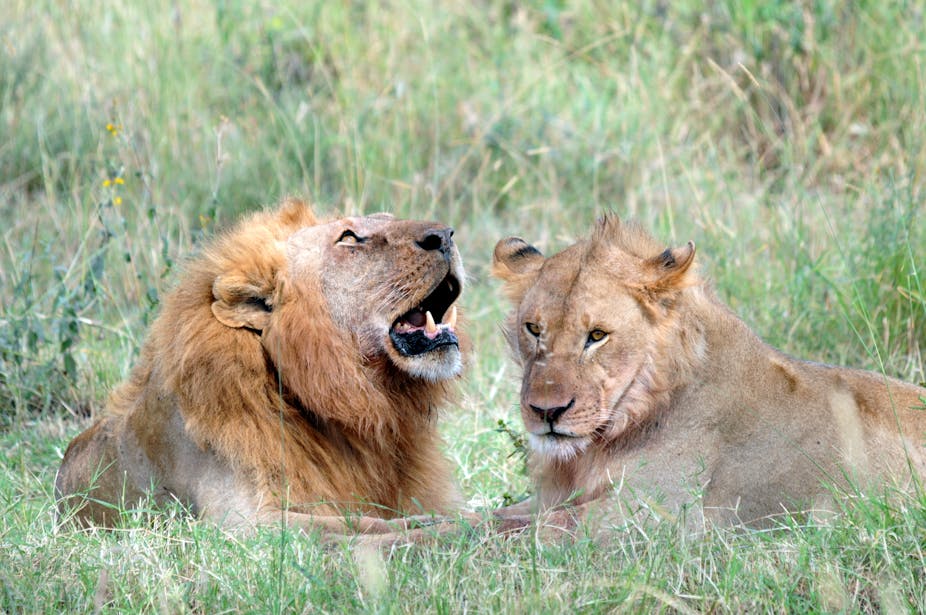Large predator numbers are declining across the globe. These declines have considerable ecological knock-on effects, many of which are currently unknown. Novel conservation techniques are required to reverse predator declines.
One such conservation action is the reintroduction of large predators into areas from which they have been eradicated. These large predator reintroduction programmes have more than one benefit. They expand the range of many vulnerable and endangered species. They also restore ecological predator-prey interactions, as well as boosting local tourism opportunities.
The most publicised and well known of these programmes was the reintroduction of wolves into the Yellowstone National Park in the US. This resulted in an ecological cascade, or knock-on effects. There were several of these but a key one was fearful elk moving away from rivers. This in turn led to the recovery of riverine vegetation, which in turn increased the abundance of songbirds, beavers and other species.
These observations have spurred scientists worldwide to focus their efforts on trying to unravel how ecosystems respond to predator reintroductions. This focus has increased the understanding of predator-prey interactions, but has also highlighted gaps in the understanding of the role of predators.

Will it work in Africa?
Transferring the trophic cascade ideas developed in Yellowstone to African ecosystems is not a simple process. African ecosystems are extremely complex. They harbour a larger suite of predators preying on a larger suite of prey compared with Yellowstone. Add to this the considerable influence of megaherbivores, like elephants, and you have a complex jigsaw of ecological interactions.
Despite this complexity, the recent increase of large carnivore reintroductions in South Africa provides an ideal opportunity to investigate the relative influence of predators. South Africa is home to a number of large predator reintroductions. The scientific community is now gaining new insights about the effects these predators have on prey populations and behaviour, and ultimately ecosystems.
In our research we used the reintroduction of lion and spotted hyena into the Addo Elephant National Park. The aim was to investigate how these two top predators influence prospective prey species. Specifically, we compared the activity patterns of warthog, kudu, buffalo and elephant in two neighbouring, but separately fenced, sections of Addo.
Based on our research we saw changes in the behaviour and activities of prospective prey when predators were present. As was seen in Yellowstone, changes in behaviour of one species in the ecosystem can have knock-on effects. The exact nature of these knock-on effects in Addo is still under investigation.
The impact of lion and spotted hyena
In the Main Camp section, lion and spotted hyena were reintroduced in 2003 and 2004. At the time of the study, these two predators had been absent from the Nyathi section of the park for more than 100 years.
Lion and spotted hyena are active predominantly at night.
The results show that when lion and spotted hyena are present, all prospective prey species are most active during the day.
But in the Nyathi section, where predators were absent, kudu and buffalo were more active at night.
One possible consequence of this might be that kudu and buffalo save water and energy by being active at night when it’s cooler. What the long-term consequences of this behaviour might be is, however, not known.
In the presence of predators, kudu and buffalo are active at the hottest time of the day. These activity patterns mirror kudu and buffalo activity patterns elsewhere in the immediate presence of lions. This behaviour in the presence of predators may have heat stress implications. This heat stress may reduce food intake for African ungulates with long term population consequences.
Elephant and warthog were active during the day regardless of whether lion and spotted hyena were present. Even though warthog spent the night in burrows in both sections, in the presence of lions and spotted hyena, they emerged later and returned earlier thus reducing their activity when lion and spotted hyena are active.
Elephants, which are largely free from lion and spotted hyena predation, had virtually identical activity patterns in the presence and absence of lion and spotted hyena.
Another important outcome is the increased visibility of the prey species for tourism. In the absence of lion only about 5% of tourists were fortunate enough to see buffalo, one of the must see big five species, for African game viewing. After the reintroduction of lion, however, 95% of tourists recorded seeing buffalo.
So reintroducing predators has important ecological and evolutionary effects beyond simple predator conservation goals. In addition, the unintended consequence of enhanced game viewing of prey species for tourists may boost the tourism value of areas to which large predators are introduced.

